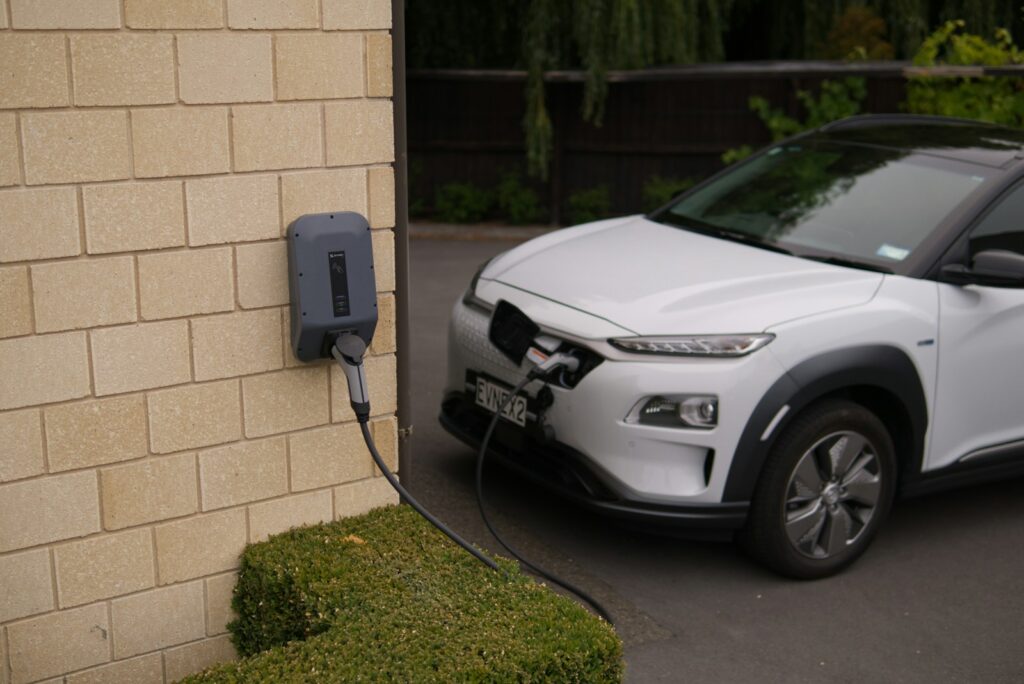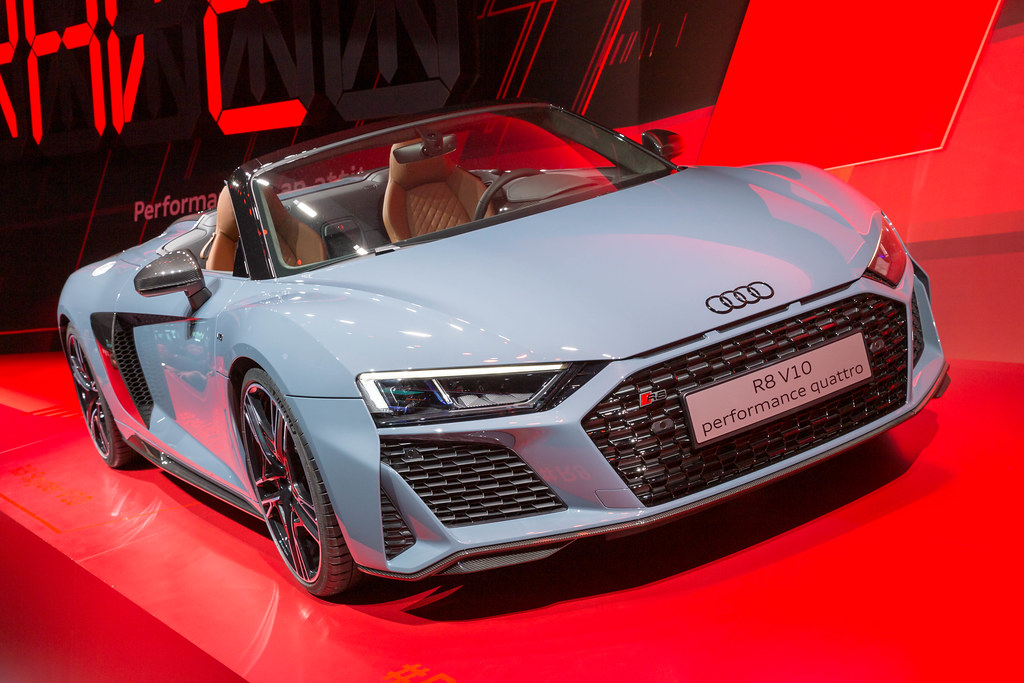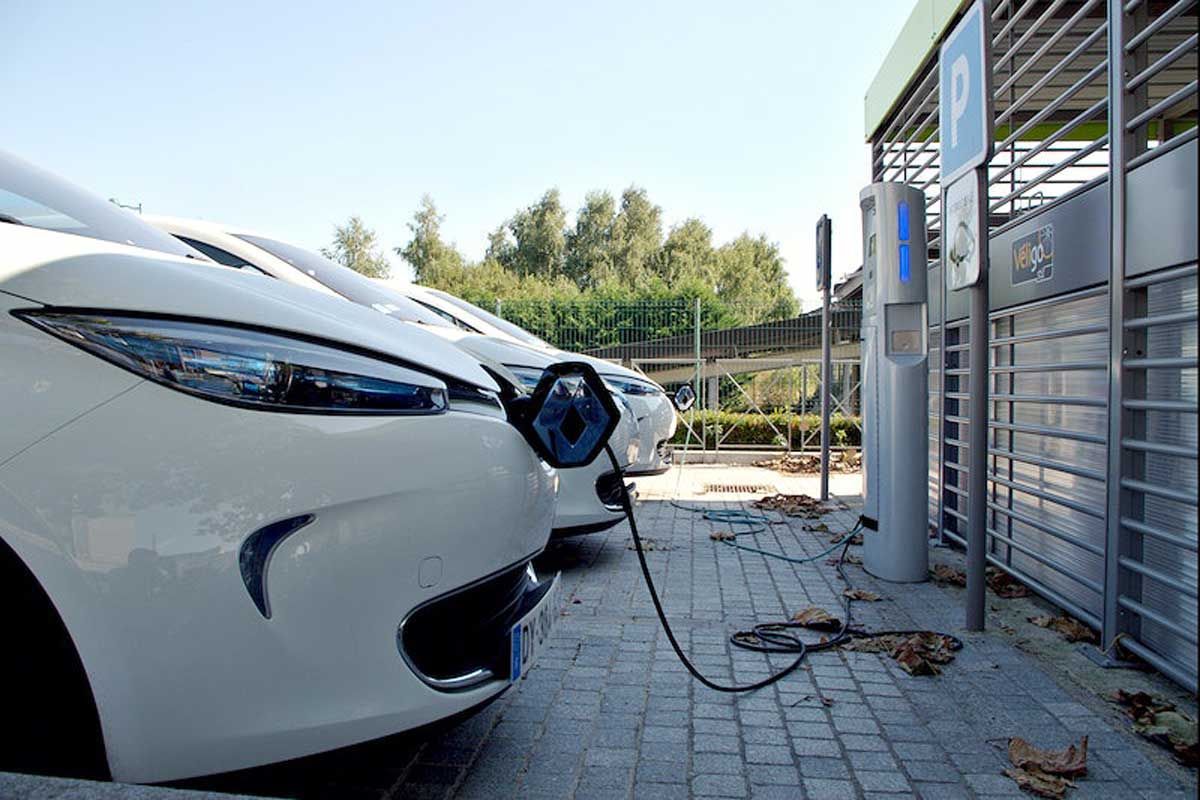
Electric vehicles (EVs) represent a monumental leap forward in automotive technology, promising a cleaner, more efficient, and often exhilarating driving experience. However, beneath their sleek exteriors and silent powertrains lies a complex ecosystem of cutting-edge components that differ significantly from the internal combustion engine (ICE) vehicles many of us are accustomed to.
At the very heart of every EV, for instance, is the battery pack—a marvel of engineering that is also exceptionally costly. Replacing this single component can easily run into the tens of thousands of dollars, a figure that can give even the most financially secure owner pause. Unlike the routine tune-ups or oil changes of gasoline cars, EV batteries degrade over time, a process influenced by charging habits, local climate, and driving conditions.
Most manufacturer warranties offer a protective shield for around 8 years or 100,000 miles, but what happens once this coverage expires? The prospect of facing staggering repair bills for these high-tech systems can be daunting. This is precisely where EV extended warranties step in, designed to offer a crucial layer of financial protection and, perhaps most importantly, invaluable peace of mind. But are they truly a worthwhile investment for every EV owner? Let’s delve into the essential aspects to help you make an informed decision.
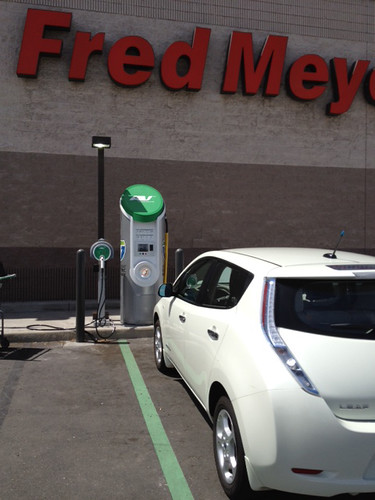
1. **Understanding Why EVs Need Extended Protection**Electric vehicles are, without a doubt, cutting-edge machines, representing the pinnacle of automotive innovation. Yet, it’s imperative for owners and prospective buyers to recognize that their underlying technology varies greatly from traditional gasoline-powered cars. This fundamental difference underscores the unique need for extended protection beyond standard manufacturer offerings.
At the core of an EV’s operational integrity is its battery pack—a sophisticated and incredibly expensive component. To put its value into perspective, replacing a high-voltage battery pack can cost tens of thousands of dollars, making it the single most significant potential repair expense an EV owner might face. This critical component, unlike a gas engine, doesn’t require tune-ups, but it is susceptible to degradation over time. Factors such as consistent fast charging, exposure to extreme climates, and varied driving conditions can accelerate this natural process.
While most manufacturers provide a warranty covering the battery for a substantial period, typically around 8 years or 100,000 miles, this coverage eventually expires. Once the factory warranty lapses, owners are left exposed to the full brunt of potential repair costs, which, as noted, can skyrocket for specialized EV components. This is the precise juncture where EV extended warranties become not just an option, but a compelling consideration, offering a vital safety net against unforeseen and hefty expenses, thus providing invaluable financial protection and peace of mind.
Read more about: Your Comprehensive Guide to Installing a Home EV Charging Station: Costs, Process, and Expert Advice

2. **Deciphering What an EV Extended Warranty Covers**When considering an EV extended warranty, understanding precisely what it covers is paramount. These plans are designed to build upon and extend the timeframe and mileage of the manufacturer’s original warranty, offering continued protection against mechanical and electrical failures. However, the specifics can vary considerably between providers and plans, necessitating a careful review of the fine print.
Among the most critical inclusions for any EV owner is comprehensive protection for the high-voltage battery pack, the electric motor, and all associated electronics. These components are, without question, the most expensive parts to repair or replace in an electric vehicle. Their inclusion in an extended warranty is not merely beneficial; it is absolutely essential to safeguard against the most significant financial risks associated with EV ownership.
Beyond the primary powertrain components, many extended warranties also encompass charging systems. This can include problems with onboard chargers, the charging port itself, or even home charging equipment, depending on the plan’s scope. Given the continuous evolution of charging infrastructure and technology, coverage for these elements is particularly important. Furthermore, while EVs lack traditional transmissions and exhaust systems, their powertrains still incorporate components such as reduction gears and cooling systems, which may also be covered. Some plans even extend to wear-and-tear items like brakes and suspension, recognizing that even with regenerative braking reducing brake wear, these components still require maintenance. Additionally, many warranties offer perks like roadside assistance, towing, and trip interruption coverage, which can be invaluable in the event of a breakdown far from home.
It is crucial to approach extended warranty selection with a discerning eye, as not all plans are created equal. Certain warranties may specifically exclude high-cost repairs or impose stringent conditions, such as mandating maintenance solely at authorized dealerships. This highlights the absolute necessity of thoroughly reading the fine print to gain a crystal-clear understanding of what is definitively included and, equally important, what is explicitly excluded from your coverage.
Read more about: The 14 Essential Questions to Ask Before Buying a Car: Your Comprehensive Guide to Safety and Value

3. **Evaluating the True Cost vs. Benefit**The price of an EV extended warranty is not a fixed sum; it fluctuates significantly based on a multitude of factors, including the make and model of your vehicle, its age, current mileage, and the specific level of coverage you opt for. On average, you might expect to pay anywhere from $1,000 to $5,000 for a multi-year plan. Naturally, luxury EVs or those with higher mileage will typically command higher premiums, reflecting the increased risk and potential cost of repairs.
Providers often offer tiered plans to accommodate different budgets and needs. For instance, a powertrain-only coverage option will be less expensive but, by its nature, less comprehensive, focusing solely on the core drive components. Conversely, a bumper-to-bumper plan, while more expensive, aims to cover almost everything, offering the broadest possible protection. The decision of whether an extended warranty is truly worth the investment hinges on a careful consideration of these costs against the potential benefits.
While electric vehicles generally boast lower maintenance costs compared to their ICE counterparts—eliminating oil changes, having fewer moving parts, and benefiting from regenerative braking that reduces brake wear—the cost landscape shifts dramatically when something significant goes wrong. Repairs involving the battery or sophisticated electronics can be staggering. For example, replacing a Tesla battery pack alone can cost $10,000 to $20,000 or even more. If your chosen extended warranty explicitly covers such a monumental expense, the peace of mind it offers might very well justify the upfront cost, transforming a potential financial catastrophe into a manageable event.
However, it’s also important to acknowledge that extended warranties can be perceived as a gamble. If your EV maintains its reliability and never requires major repairs during the coverage period, you could end up paying thousands of dollars for protection you never utilize. Additionally, some manufacturers provide the option to purchase extended coverage closer to the expiration of the factory warranty. These manufacturer-backed extensions can sometimes be more affordable and more precisely tailored to your specific vehicle than many third-party plans, offering an alternative path to continued protection.
Read more about: How to Uncover a Used Car’s Past: A Consumer’s Guide to Identifying Former Rentals, Taxis, and Police Vehicles
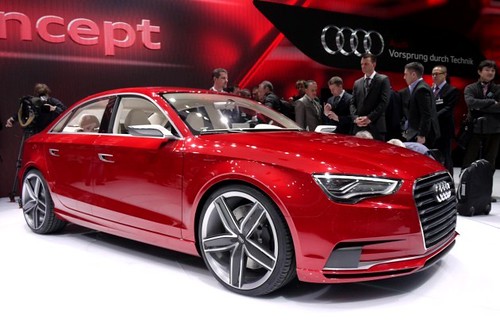
4. **Assessing Manufacturer Reliability and Your Driving Habits**When contemplating an extended EV warranty, a crucial factor to consider is the inherent reliability of your specific EV model and its manufacturer. Not all EV brands or models are created equal in terms of their track record for durability and performance. Some brands, like Tesla, have cultivated a reputation for solid reliability in certain areas, while others are newer to the market and are still in the process of proving themselves over time. It is highly advisable to conduct thorough research into your specific model’s historical reliability and common issues. If your vehicle is known for its robust construction and infrequent major breakdowns, your need for an extended warranty might be less pressing compared to owning a less established or more problem-prone brand.
Equally important are your personal driving habits. The way you use your electric vehicle can significantly influence the necessity and value of extended coverage. Do you typically drive long distances, accumulating high mileage rapidly? Or do you reside in regions characterized by extreme climates, whether consistently hot or unusually cold, which can accelerate battery degradation? High-mileage drivers, or those who frequently expose their vehicles to challenging environmental conditions, often stand to benefit more substantially from extended coverage, as these factors can increase the likelihood of needing repairs covered by the warranty.
The average American drives approximately 14,500 miles annually. If your driving patterns deviate significantly from this average, it should inform what you prioritize in a warranty. For instance, if you’re a high-mileage driver, a warranty with more generous mileage coverage should be a key consideration. Conversely, if your driving is primarily local and characterized by shorter distances, a warranty offering a longer duration in years might be more advantageous. Furthermore, for those living in extreme climates or heavily reliant on frequent fast charging—a practice that can contribute to battery wear—it becomes prudent to specifically scrutinize the battery capacity coverage of any prospective warranty plan. In such scenarios, exploring EVs equipped with LFP (Lithium Iron Phosphate) battery types, which are often more resilient to certain charging habits and climates, could also be a strategic consideration.
Read more about: Is Your Toyota Affected by Urgent Safety Recalls? A Deep Dive into Critical Braking Components and Other Key Issues

5. **The Advantages of an EV Extended Warranty**Investing in an EV extended warranty brings forth a compelling set of advantages that cater directly to the evolving landscape of electric vehicle ownership. These benefits extend beyond mere mechanical protection, touching upon financial security, emotional reassurance, and even the vehicle’s long-term market value.
Perhaps the most immediately obvious and significant advantage is **financial protection**. Electric vehicles, while generally efficient, house components like the battery pack and advanced electronics that are extraordinarily expensive to repair or replace. An extended warranty acts as a crucial buffer against these potentially staggering, unexpected repair bills. Knowing that a major component failure won’t necessitate an immediate, substantial outlay of personal funds provides a robust safety net, guarding your savings against the unpredictable nature of high-tech automotive repairs.
Alongside financial protection comes a considerable enhancement in **peace of mind**. For many, especially new EV owners who are still acclimatizing to their vehicles’ unique characteristics, the unknown can be a source of anxiety. The assurance that major components are covered reduces this worry, allowing owners to enjoy their driving experience without the constant underlying fear of a catastrophic, uninsured repair. This psychological benefit is often just as valuable as the monetary one, fostering a greater sense of confidence and security in your investment.
Furthermore, many extended warranties offer a welcome degree of **flexibility**. Providers often present a range of plans, allowing you to choose the coverage level and duration that most precisely aligns with your individual needs and budgetary constraints. Whether you prefer a basic powertrain plan or a more comprehensive bumper-to-bumper option, this ability to customize your protection ensures that you’re paying for coverage that genuinely serves your specific circumstances, rather than a one-size-fits-all solution.
Finally, an extended warranty can significantly contribute to a **potential resale value boost** for your EV. When the time comes to sell your vehicle, having transferable extended warranty coverage can make it considerably more attractive to prospective buyers. Future owners often view the added protection as a compelling selling point, enhancing the vehicle’s perceived reliability and reducing their own long-term financial risk. This can translate into a higher resale price and a quicker sale, making the initial investment in the warranty a strategic move if you anticipate selling your EV before its coverage expires.
Read more about: Your Comprehensive Guide to Installing a Home EV Charging Station: Costs, Process, and Expert Advice

6. **Potential Pitfalls: Limitations, Exclusions, and Third-Party Risks**While the advantages of an EV extended warranty are clear, it is equally important to approach this decision with a realistic understanding of the potential drawbacks and complexities. Being aware of these pitfalls can help prevent future disappointments and ensure you make a truly informed choice.
One significant consideration is the **cost vs. benefit ratio**. If your electric vehicle proves to be highly reliable and you rarely encounter significant mechanical or electrical issues, the extended warranty might ultimately become an unnecessary expense. In such scenarios, you could end up having paid thousands of dollars for coverage that you never actually utilized, leading to a financial outlay that offers no tangible return. It’s a calculated risk, and for some, the gamble may not pay off.
Another critical area of concern revolves around **limitations and exclusions**. Extended warranty plans are not always all-encompassing, and many contain fine print that can significantly impact their utility. For example, some plans might deny claims if they determine a pre-existing condition caused the issue, or if you haven’t strictly adhered to a specified maintenance schedule, often requiring service at authorized dealerships. These loopholes can lead to frustrating and costly surprises when you expect coverage but are denied, emphasizing the crucial need to meticulously review every detail of the agreement.
Opting for a **third-party warranty**—one not directly offered or backed by the original manufacturer—introduces an additional layer of risk. While many third-party providers are reputable, there is always a possibility that a less scrupulous company could go out of business, leaving you without coverage, or that they might unfairly deny legitimate claims, forcing you into lengthy and expensive disputes. The stability and reputation of the provider are paramount when considering a third-party option.
Lastly, there’s the issue of **overlapping coverage**. Before committing to an extended warranty, it’s prudent to assess your existing financial safeguards. If you already possess a comprehensive insurance policy that covers certain types of damages, or if you have a dedicated savings fund specifically earmarked for potential vehicle repairs, you might find that an additional warranty offers redundant protection. In such cases, purchasing an extended warranty could be an inefficient use of your financial resources, providing coverage you effectively already have through other means.
Read more about: Beyond the Sales Pitch: An Objective Look at Extended Car Warranties – Are They Worth the Investment for Savvy Consumers?
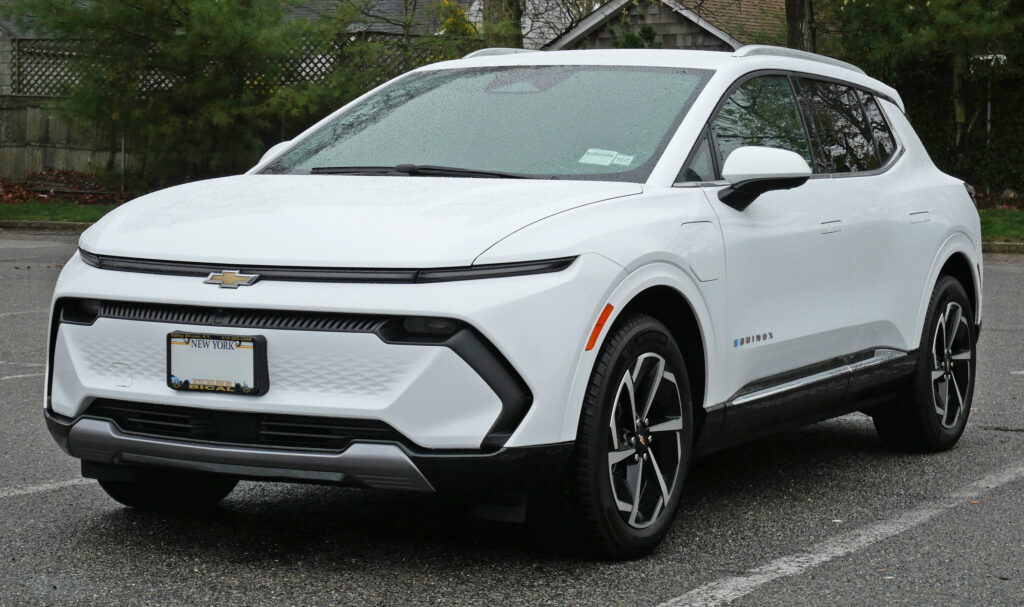
7. **Key Steps to Choosing the Right Plan**Deciding to invest in an EV extended warranty is a significant financial commitment, and ensuring you select the right plan requires a methodical approach. By following a series of key steps, you can navigate the market effectively and secure the best deal that truly meets your needs and provides genuine peace of mind.
Firstly, **research providers thoroughly**. The market offers warranties from various sources, including the vehicle manufacturer itself, dealerships, and a host of third-party companies. It’s essential to compare their offerings side-by-side, paying close attention to their reputation. Look for independent reviews and customer ratings to gauge the reliability of their service and their track record for honoring claims. A provider’s standing in the industry is often a strong indicator of future performance.
Secondly, it is absolutely paramount to **understand the terms and conditions** in detail. Before signing anything, scrutinize the fine print for crucial elements such as deductibles—the amount you pay out-of-pocket per claim—and any claim limits, which cap the total amount the warranty will pay for repairs. Most critically, identify any exclusions, which specify what the warranty will *not* cover. Some warranties might only cover repairs up to a certain monetary amount or impose a fee each time you make a claim. A clear understanding of these details will prevent unwelcome surprises down the line.
Thirdly, **timing is key** when purchasing your extended warranty. Generally, it is most advantageous to secure coverage before your factory warranty expires. Many providers offer discounts or more favorable terms for early buyers, and critically, purchasing before expiration ensures there are no gaps in coverage, leaving you vulnerable between the end of your manufacturer’s warranty and the start of your extended plan.
Fourthly, **consider your vehicle’s age and mileage**. These factors heavily influence both the availability and cost of extended warranties. Older EVs or those with higher mileage might not qualify for the most comprehensive or affordable plans. In some instances, the increased cost of a warranty for a high-mileage vehicle might outweigh the potential benefits, making it a less sound financial decision. Be realistic about your vehicle’s current state and its projected lifespan.
Fifthly, **check for additional benefits**. Beyond core component protection, many extended warranties sweeten their offerings with valuable perks. Look for plans that include benefits such as roadside assistance, which can be a lifesaver if you experience a breakdown, rental car reimbursement while your vehicle is being repaired, or even free maintenance checks. These supplementary features can add significant value and convenience to your overall ownership experience.
Finally, and just as important as provider research, **read reviews from current and former EV owners**. These real-world experiences can provide invaluable insights into whether a particular warranty provider consistently delivers on its promises. Learning from others’ interactions with claims processes, customer service, and overall satisfaction levels can illuminate the practical realities of a warranty far beyond what the sales brochure might convey, guiding you towards a provider that truly supports its customers.
Having established the foundational aspects of EV extended warranties, it’s now time to delve deeper into the specific offerings available to consumers. Understanding the nuances between manufacturer-backed options and those provided by third parties, dispelling common myths, and preparing for the unique challenges of purchasing a used EV are all critical steps in securing truly comprehensive protection. This section will also cast an eye towards the future, examining emerging trends and the broader ecosystem of incentives that continues to shape the electric vehicle landscape for owners. Through thorough research and clear, actionable advice, we aim to empower you to navigate this evolving market with confidence.
Read more about: Diesel Durability Unveiled: 10 Engines That Redefine Longevity — And Those That Don’t
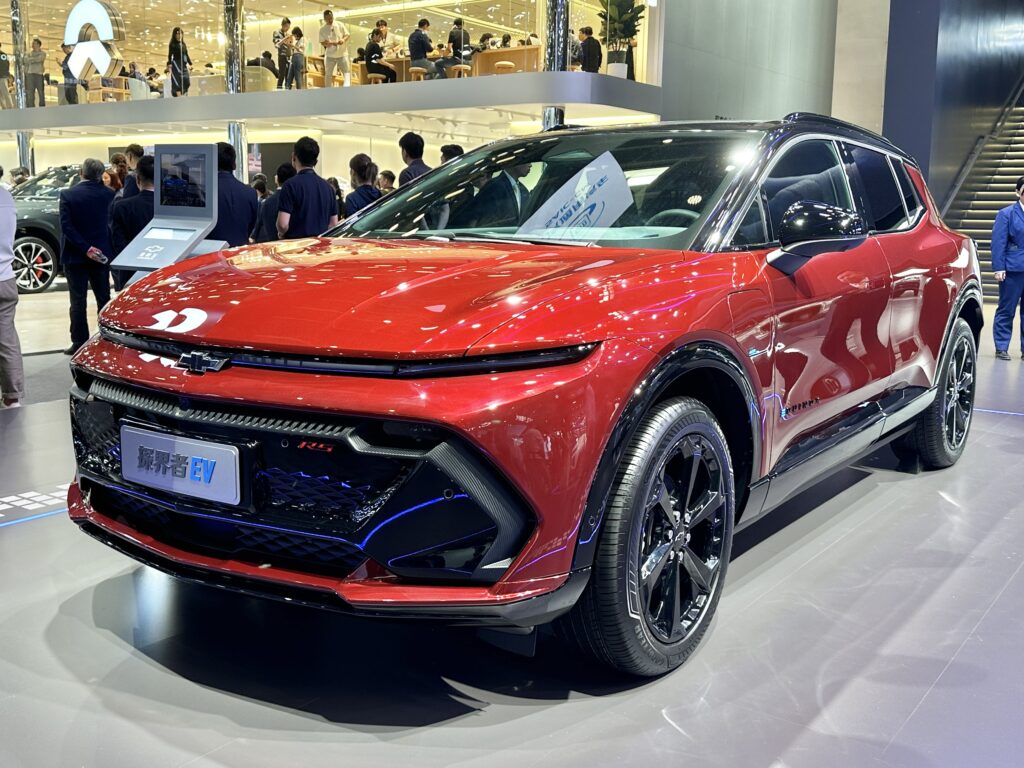
8. **Diving Deeper into OEM Extended Warranty Options**When considering an extended warranty, original equipment manufacturer (OEM) options often provide a baseline of quality and integration with your vehicle’s specific systems. Automaker warranties, typically accompanying the purchase of a new car, set the standard, with extended warranties available as an add-on or for pre-owned vehicles. It is crucial to be aware that most OEM warranties include exclusions for commercial use, as well as damages resulting from certain actions or accidents, highlighting the importance of reading the fine print.
Most OEM warranties offer coverage for 8 or 10 years, covering at least 100,000 miles, and crucially, they typically cover significant loss of battery capacity, usually beyond 25-30% depending on the manufacturer. An important advantage is that these warranties are often transferable to new owners, which can be a significant benefit when reselling your EV. Your personal driving habits, such as whether you prioritize mileage or length of time covered, should guide your assessment of these options.
Several automakers stand out for their robust OEM warranty offerings in 2025. VinFast, for example, provides one of the most extensive EV warranties, protecting vehicles with unlimited mileage for up to 10 years. Mercedes (EQE, EQS models) offers protection for up to 155,000 miles and 10 years, guarding against over 30% capacity loss. Rivian’s warranty covers 120,000 to 175,000 miles for 8 years, also with capacity loss protection.
For Tesla owners, coverage varies by model: Model X, Model S, and Cybertruck warranties extend up to 150,000 miles for 8 years, while Model 3 and Model Y are covered for 100,000 to 120,000 miles over 8 years, both including protection against more than 30% capacity loss. Hyundai, Kia, and Genesis provide warranties up to 100,000 miles and 10 years, making them ideal for those who drive shorter distances, with a similar capacity loss guarantee. Other brands like Chevrolet, Nissan, Honda, Lexus, and Cadillac offer strong protection against capacity loss (beyond 25%), covering up to 100,000 miles for 8 years, which is particularly beneficial for drivers in extreme climates or those relying on frequent fast charging. Mercedes (EQB), BMW, Audi, Ford, and Volkswagen also provide substantial baseline coverage, typically 100,000 miles over 8 years with a 70% capacity guarantee, which proves sufficient for most drivers.
Read more about: Your Ultimate Guide to the Most Reliable Cars for Retirees: Making Your Final Vehicle Choice with Confidence

9. **Exploring Leading Third-Party Extended Warranty Options**Beyond manufacturer-backed plans, extended warranties, also known as vehicle service contracts, are available from third-party providers and often begin where OEM coverage concludes. These options can be particularly appealing for used EV buyers. However, it’s essential to exercise diligence and carefully scrutinize the fine print, as not all third-party plans cover critical EV components, especially battery replacements. Many providers, as highlighted by industry representatives, still do not comprehensively cover EV-specific components or, in some cases, specifically exclude the battery.
General characteristics of third-party extended warranties for electric vehicles include their availability for both new and used EVs. They typically involve a waiting period before coverage takes effect and often come with a deductible that the owner must pay per claim. The most crucial aspect for EV owners is verifying whether the plan explicitly offers EV battery coverage, as this is often the most expensive component to repair or replace. Without this specific inclusion, the perceived value of such a warranty for an EV is significantly diminished.
Several reputable third-party options have emerged, each with distinct features. Xcelerate Auto’s XCare EV Protection, for instance, offers specialized coverage for EVs, initially focusing on Tesla but now covering most makes and models. This plan covers the battery if the vehicle is less than 7 years old and under 100,000 miles, with multiple deductible options and a 30-day grace period. It also offers the benefit of being transferable to a new owner for a fee, adding potential resale value.
AmberCare from Amber focuses exclusively on Tesla models (S, X, 3, Y) and is available in most states. It provides battery coverage through its premium tier plans, featuring a $250 deductible for battery or drivetrain issues and a $100 deductible for other repairs, after a 25-day waiting period. This option is noted for its affordable monthly rates, starting at $60. Fidelity Warranty Services, Inc. offers EV+ Protect, typically accessed through dealerships, with battery coverage that may have exceptions depending on the location and specific plan. Fidelity is an established company that provides up to 11 years and 150,000 miles of coverage with multiple deductible choices.
CarShield also offers Electric Vehicle Coverage, though it does not specialize solely in EVs. For this reason, EV drivers must ensure their plan includes the “Battery Coverage Endorsement” to ensure the EV battery is not excluded. Deductibles and waiting periods vary, and CarShield notably offers options for commercial use, such as rideshare and delivery drivers. Additionally, some auto dealerships partner with insurance companies to offer extended warranties, which can vary widely in terms and conditions, making it imperative to double-check the fine print, particularly regarding battery coverage, before committing.
Read more about: Don’t Get Shocked: Decoding Hybrid Battery Replacement Costs and What You Need to Know
10. **Addressing Common Misconceptions About EV Warranties**When navigating the world of EV warranties, consumers frequently encounter misinformation that can lead to misinformed decisions. One pervasive belief is that the federal government mandates a minimum battery warranty of at least eight years or 100,000 miles for all electric vehicles. This, however, is a common misconception. While the Department of Energy acknowledged in 2016 that this was the most common EV warranty, it was not presented as a federal requirement.
The genesis of this myth likely stems from the Clean Air Act, which does mandate an eight-year or 80,000-mile warranty on specific emissions equipment in vehicles, such as catalytic converters, electronic emissions control units, and onboard diagnostic devices. This is a crucial distinction, as it applies to traditional emissions components rather than the high-voltage EV battery itself. The absence of a federal mandate means that manufacturers set their own battery warranty terms, which can, in theory, change over time. Consumers should therefore always verify the warranty details for their specific vehicle rather than relying on assumed federal requirements.
Another prevalent misconception centers around California, often believed to mandate a 10-year or 150,000-mile EV battery warranty on all electric vehicles sold within the state. While California does indeed have a warranty mandate for certain vehicles, it specifically covers Partial Zero Emissions Vehicles (PZEVs), not all electric vehicles. This distinction is vital, as not all EVs qualify as PZEVs under the relevant regulations (CCR §1962).
Therefore, a blanket assumption that all EVs in California automatically come with this extensive battery warranty is incorrect. Consumers in California, just like those in other states, must meticulously review the specific warranty documentation for their chosen EV to understand the exact coverage and its duration. Dispelling these myths is crucial for consumers to approach extended warranty decisions with accurate information, ensuring they truly understand what protections are legally required and what are offered voluntarily by manufacturers.
Read more about: The Electrified Road Ahead: Unpacking Why 2025 Hybrid SUVs are Dominating the Market Landscape

11. **Essential Advice for Used EV Buyers**Purchasing a used electric vehicle can be an excellent way to enter the EV market, but it comes with unique considerations, especially regarding the battery’s health and remaining warranty coverage. Without the benefit of a brand-new factory warranty, used EV buyers must take extra precautions to ensure they are making a sound investment and avoiding a “lemon” with a rapidly degrading battery. Diligence at this stage can save thousands of dollars in potential future repair costs.
Firstly, scheduling a pre-purchase inspection with a mechanic who specializes in and has experience testing EV batteries is paramount. Unlike internal combustion engines, EV batteries require specialized diagnostic tools and expertise to accurately assess their current state of health, capacity retention, and any underlying issues. A certified EV technician can provide an objective evaluation, offering crucial insights into the battery’s remaining lifespan and potential performance.
Secondly, thoroughly checking the vehicle history report is an indispensable step. This report can reveal critical red flags such as previous accidents, especially those involving significant impact to the undercarriage where the battery is housed, or any history of flooding, which can severely compromise electronic components and the battery pack. Furthermore, look for indicators like fleet use, a salvage title, or long gaps with no recorded service history, all of which could signal potential issues or a lack of proper maintenance throughout the vehicle’s life.
Finally, and perhaps most importantly, run the vehicle identification number (VIN) by the automaker directly. This step allows you to verify precisely how much of the original bumper-to-bumper and battery warranties remain on the vehicle. Crucially, confirm that these warranties are transferable to the new owner, as not all manufacturer warranties automatically convey upon resale. Understanding the existing warranty coverage, or lack thereof, is fundamental to assessing your risk and determining whether purchasing an extended warranty is a prudent additional safeguard for your used EV.
Read more about: Navigating EV Battery Warranties: A Comprehensive Guide to Longest Coverage for Peace of Mind

12. **The Future Landscape of EV Warranties**As the electric vehicle market continues its rapid expansion and technological advancements, the landscape of EV warranties is also poised for significant evolution. The future promises new challenges and opportunities for both manufacturers and consumers. Battery technology, the most critical component in an EV, is improving at an accelerated pace, with some manufacturers projecting that their latest models will retain 80% of their range after 200,000 miles or more. Should these claims prove true, the long-term reliability of EV batteries could fundamentally alter the perceived necessity and structure of extended warranties, potentially decreasing demand for such coverage over time.
Beyond technological improvements, regulatory changes are increasingly likely to influence EV warranties. Governments globally, including in India, are beginning to advocate for standardized battery warranties or pushing manufacturers to assume greater responsibility for the entire lifecycle of EV batteries, including end-of-life disposal and recycling. These developments could lead to more uniform and comprehensive warranty offerings across the industry, impacting both the cost and availability of extended plans by potentially integrating longer-term protection into the initial vehicle price or mandated manufacturer obligations.
Market trends, particularly in rapidly growing regions like India, offer a glimpse into the future. The Indian extended warranty market for EVs is projected to grow significantly, driven by increasing EV adoption, government incentives, and a heightened consumer awareness regarding long-term protection. Government policies, such as the Electric Mobility Promotion Scheme (EMPS) and reduced GST rates on EVs, are stimulating demand. Concurrently, the phasing out of subsidies, like the FAME subsidy, is encouraging consumers to seek long-term warranty coverage as they become more financially responsible for their vehicles post-purchase. This demonstrates a growing consumer demand for comprehensive and extended coverage, often stretching to 7-8 years, reflecting a desire for sustained peace of mind.
Key factors influencing this evolving market include the persistently high cost of battery and powertrain repairs, which makes extended warranties highly attractive. Rising consumer awareness about the benefits of warranty extensions, such as cost savings and enhanced resale value, further fuels this demand. While India currently lacks a federal mandate for minimum EV battery warranties, manufacturers are voluntarily offering longer coverage durations to build consumer trust and gain a competitive edge. This competitive landscape, with new entrants and global brands eyeing markets like India, is pushing existing manufacturers to continuously innovate and offer increasingly competitive warranty packages, ensuring that the future of EV warranties will likely be characterized by greater protection and adaptability.
Read more about: Navigating EV Battery Warranties: A Comprehensive Guide to Longest Coverage for Peace of Mind

13. **Navigating EV Incentives: Beyond Warranties**Beyond the crucial financial protection offered by extended warranties, prospective and current electric vehicle owners can significantly benefit from a diverse array of financial incentives designed to make EV adoption more accessible and affordable. These incentives, available at both federal and state levels, complement warranty coverage by reducing the initial and ongoing costs of EV ownership, thereby enhancing the overall value proposition of electric mobility.
At the federal level, significant tax credits are available. New EV purchases may qualify for up to a $7,500 federal tax credit, though eligibility is subject to specific income and vehicle requirements, including criteria related to battery components or minerals sourced from the U.S. or free-trade partners. For those considering pre-owned EVs, a $4,000 federal tax credit is available, also subject to price caps and other eligibility guidelines. Furthermore, federal incentives extend to charging infrastructure through programs like the Alternative Fuel Infrastructure Tax Credit, which supports the installation of home charging equipment, further reducing the financial barrier to EV ownership.
State-level incentives offer additional layers of financial support, varying considerably by location. Many states provide rebates on new or used EV purchases or leases, exemplified by California’s Clean Vehicle Rebate Program. Some states, like Colorado, offer supplementary state EV tax credits, further sweetening the deal. Beyond direct financial benefits, states often implement non-monetary incentives such as High-Occupancy Vehicle (HOV) lane access for EV drivers, irrespective of passenger count, which can significantly reduce commute times. Reduced or waived vehicle registration and inspection fees are also common, lowering the ongoing operational costs.
Utility companies also play a role, providing rebates for home charger installation or offering advantageous time-of-use electricity rates that make charging more economical during off-peak hours. These combined federal and state incentives, when thoroughly researched and utilized, can dramatically reduce the total cost of EV ownership, making the transition to electric vehicles not only environmentally responsible but also financially astute. Understanding and leveraging these incentives alongside robust warranty planning can create a comprehensive financial strategy for your EV.
Read more about: Your Definitive 2025 Guide: What to Check When Buying a Used Electric Vehicle
14. **Real-World Scenarios: When Extended Coverage Pays Off**While the concept of an extended warranty is rooted in abstract future risks, real-world examples powerfully illustrate its tangible value and the peace of mind it can provide. These scenarios underscore the unpredictable nature of electric vehicle repairs and highlight instances where foresight in purchasing extended coverage proved to be a critical financial safeguard.
Consider Case Study 1: The Tesla Owner. A Tesla Model 3 owner prudently opted for a third-party extended warranty after their original 8-year battery warranty reached its expiration. Just two years later, this decision proved invaluable when the vehicle’s battery began to degrade rapidly, resulting in a substantial 30% reduction in its usable range. Faced with a daunting $15,000 replacement cost for the battery, the extended warranty stepped in, covering the entire expense. This coverage prevented a major financial hit, transforming a potentially catastrophic repair into a manageable event and affirming the wisdom of their initial investment in extended protection.
In stark contrast, Case Study 2 presents The Nissan Leaf Driver. Confident in their vehicle’s reliability, this owner chose to forego an extended warranty. However, at 120,000 miles, an unexpected charging port failure occurred. The subsequent $2,000 repair bill came as a significant shock, prompting the owner to express regret for not having invested in coverage earlier. This scenario serves as a cautionary tale, demonstrating that even seemingly reliable vehicles can experience unexpected and costly component failures outside of their original warranty period, underscoring the potential financial exposure without extended protection.
These real-world examples vividly illustrate that while not every owner will experience such significant issues, the unpredictable nature of EV repairs means that an extended warranty can be a vital safety net. Your decision to invest in one should be based on a careful assessment of your specific situation, including your budget, your vehicle’s known reliability, and your personal risk tolerance. For many, the financial security and peace of mind offered by extended coverage, especially for high-value components like the battery, make it a wise and justifiable investment in the fast-evolving world of electric mobility.
Choosing an EV extended warranty is a crucial decision that can impact your vehicle’s long-term reliability and financial security. With electric vehicles evolving rapidly, unexpected repair costs for high-tech components like batteries, motors, and software systems can be significant. An extended warranty provides peace of mind by covering these potential expenses, ensuring that you can drive worry-free. However, not all warranties offer the same benefits, so evaluating factors such as coverage limits, exclusions, provider reputation, and cost-effectiveness is essential. While some EVs come with solid manufacturer warranties, an extended plan can bridge the gap once the original coverage expires. If you plan to keep your EV for many years or want extra protection, an extended warranty might be the right choice. Ultimately, investing in an EV extended warranty depends on your driving habits, budget, and risk tolerance, but it undeniably offers added security in the fast-changing EV landscape.


